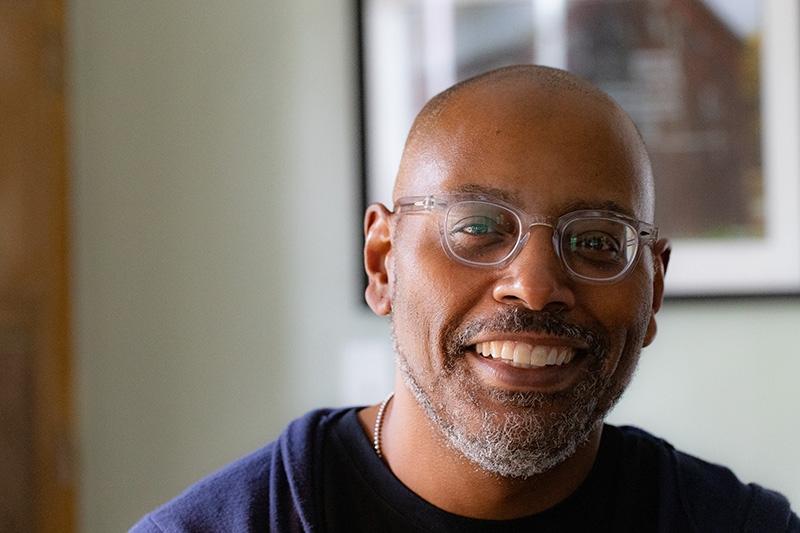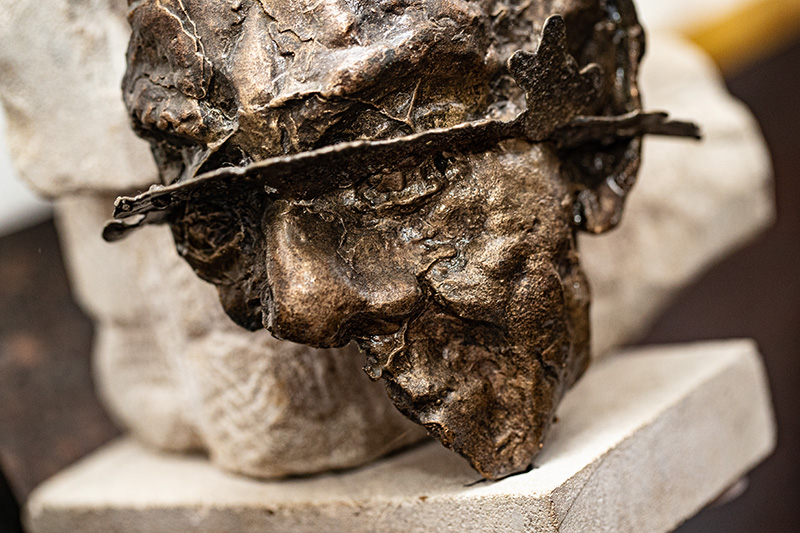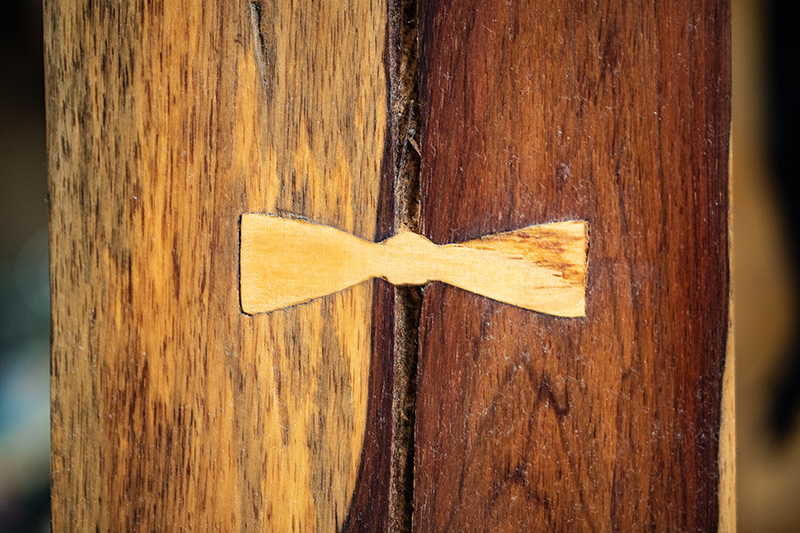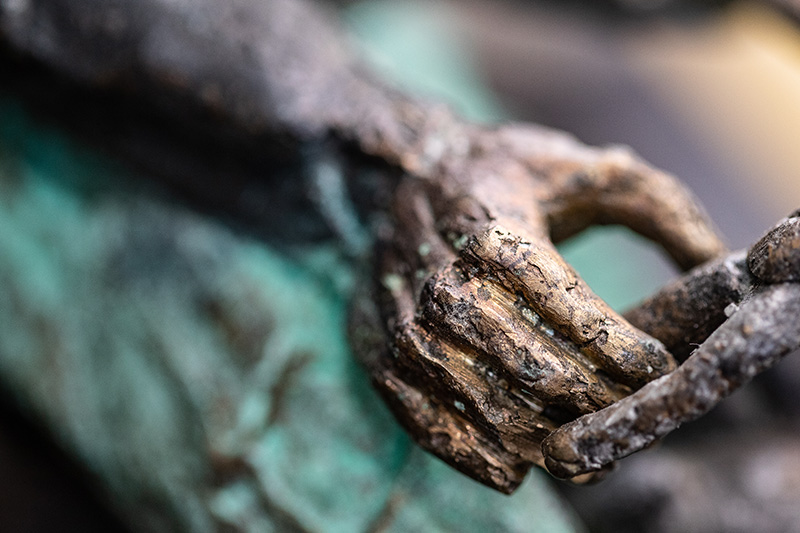Meet outsider artist and autodidactic painter/sculptor Ken Goodson. He didn’t start out working in either of those media, though. The earliest story he recalled to me involved frustration over a Batman sketch, and asking his mother to help him out with it. As a youth, he worked with what was available—manilla paper and pencil; later, charcoal and pastels.
His parents wanted him to become either a doctor, lawyer, or engineer, and he did become a field representative with an engineering firm, a career in which he currently continues part time. “The art never left, though,” Ken said. Later on, he expanded his work to include painting and sculpture.
Ken is currently working on commissions in gouache, a medium similar to watercolor, but designed to appear opaque. In reference to the green in the background, he said that he just likes to “let the green do whatever it wanted to do,” and does a lot of mixing of colors directly on the canvas. Ken has learned a lot by reading, and in particular is fascinated by the work of the impressionists.
When Ken was in his twenties, he was first introduced to painting by a young lady he was dating. She bought him some acrylics because that was what she used. He did not feel at home with paint until he discovered oils, though.
Ken confesses that creating is “like a balm” for him. It has also left him for periods in his life, especially when he has struggled with poor health. During one such slump, a decision to pick up guitar was the impetus he needed to get back to painting, except this time he changed his technique, and worked more with a knife than a brush.
Most of the time, Ken prefers to let the viewer construct the story, instead of imposing it. In this case, though, He chose to share it with me. He also prefers to focus on positive emotions, or things that make him happy. “Forgiveness” is a work that explores the notion of forgiveness and intrusion of others during a time of intimacy. It grew out of Ken’s own feelings about the imposition of the media during the funeral of the mass shooting in an Amish community back in 2006.
Much of the time Ken chooses to use bold colors–mostly purple, orange, and yellow, and claims that his work in this style might be considered too “chromatic” by his peers. As a contrast to this style, Ken later took six lessons with Michael Guinane at the Cultural Arts Center, who taught him how to layer values and tones in a more traditional manner.
In a sculpture made of bronze scraps from other sculptures one sees a good example of Ken’s primary aesthetic, that of embracing imperfections, even to the point of highlighting them for the viewer. Ken also pointed out an interesting detail about the hands of a figure riding a motorcycle: the left hand is larger than the right one. Until now, I was unaware of this practice from the masters of the Renaissance. When I asked him if anyone has ever noticed it, and made reference to this practice when they did, he replied (with a chuckle), yes, and they thought it was because I made a mistake.”
Ken has also worked with wood. At the time he began to create this bust, he didn’t know how to seal with splits in the wood, but later on, learned from a fellow artist about the use of butterflies. He made sure to point out the imperfections.
“Dancing in the Sun” was a bronze figure that Ken created while fighting cancer. He made sure to point out the imperfections and holes that could have been repaired, but he instead chose to not repair. He likes how this piece tells his story, his struggle, with all of the marks left on it. “Paint doesn’t do that,” he said. It was during the examination of this piece that I discovered Ken and I shared the Japanese philosophy of Wabi-sabi, which embraces the beauty of transience and imperfection. He shared with me the thought that “being an outsider artist kind of puts a chip on your shoulder. I’m ok sometimes with things that are not perfect, but they have to be my idea of perfect, or I can’t put them out.”
Ken’s paternal grandmother Inez was a strong woman with a sharp tongue. She also had a big heart in spite of it. Centered on the wall near the staircase was a mounted head made of unfired clay that had been sprayed with lacquer to preserve it. It was the original model for “Grandma’s Mask,” Ken’s favorite bronze sculpture.
I stood, then sat, quiet in thought for few moments, reflecting on growing, adapting, changing, all the while embracing the idiosyncrasies and imperfections of this life. It made me all the more grateful for the authenticity of this work, showing the beauty of the “perfectly imperfect.”





